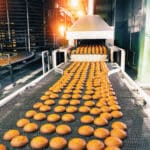The Renewable Fuels Association (RFA) has announced its commitment: Ethanol will achieve net-zero greenhouse gas emissions by 2050 (or sooner), and 70% GHG reduction vs. gasoline by no later than 2030. With demand for affordable zero-emission and innovations like sustainable aviation fuel on the rise, this commitment creates an exciting opportunity for producers nationwide to showcase the good work being done across the ethanol industry to both customers and investors.
Major buyers like BP and Shell have set some robust carbon reduction targets and neutrality commitments for their fuel supply chains. “This gives ethanol producers a great framework with which to tell their story,” says Donna Funk, biofuels lead and principal at KCoe Isom. “The trick will be accounting for, reporting, and verifying this information in the most strategic ways at both the refinery and farm level.” She advises ethanol plants to get started on this process right away.
Added Benefits of Capturing Carbon Data
Capturing this information may also help ethanol producers uncover opportunities to improve their bottom lines. Carbon data can be used to identify operational efficiencies within a refinery and qualify a company for tax credits and other financial incentives.
“There is often a bonus component that stems from this process as well,” Funk adds. “We’ve noticed that measuring carbon footprints can help companies to identify unexpected opportunities to cut costs and potentially earn tax credits.” California, Oregon, and Washington’s Low Carbon Fuel Standard (LCFS), potential international market demands for clean air and lower emissions, and the Section 45Q Tax Credit for Carbon Sequestration are just a few examples.
Starting the Process: 4 Ways to Positively Impact Your Business and Reduce its Footprint
KCoe’s biofuels and sustainability teams recommend four ways that ethanol producers can begin capitalizing on RFA’s commitment in ways that positively impact their business.
- Calculate your company’s Carbon Intensity (CI) score (not just your California CI): This will help you understand and track where your operation is at and how far it will need to go to reach reductions and neutrality. Carbon scoring will also help your company prepare for future Low Carbon Fuel Standard (LCFS) regulations that are popping up across more states. Tracking this data will allow your company to maintain its market share in these regions and potentially earn financial credits.
- Identify opportunities: Use your carbon intensity score to identify opportunities that can reduce your footprint, create efficiencies, and cut costs at the same time. Inventorying all of the carbon across your business may help your organization uncover operational adjustments, process improvements, and equipment changes that may simultaneously reduce expenses and qualify it for revenue via low carbon fuel standards, tax credits, and other financial incentives.
- Set targets: Showcase the good work your company is doing by setting an achievable, enterprise-wide target that you can measure progress against while growing your business. Many companies are setting efficiency-based reduction targets, for example, that allow them to showcase reductions on a production basis.
- Explore supply chain opportunities: There is a lot of buzz happening right now around the benefits of capturing the superb work being done at the farm level. Inventorying farm-level carbon impacts in your feedstock supply chain can help your organization showcase the carbon sequestration that may be happening, and create the “net zero” effect the industry is committing to. Often, this is already occurring due to practices like cover cropping, crop rotations, and reduced tillage.
As with any unfamiliar territory, taking the first step is often the hardest – but it doesn’t need to be paralyzing. Each plant should take one step at a time and incorporate improvements and capture opportunities as they navigate through the process over time.
Contact a biofuels advisor with questions regarding carbon intensity scoring or to discuss a plan for activating on carbon in your business.










